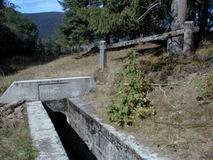
The Vchynicko-Tetovský Kanál (Vchynice-Tetov Canal) joins the Vydra and Křemelná rivers in the area between the farmstead Antýgl and the small village Čeňkova Pila.
The project of the canal was designed by Josef Rosenauer, the designer and architect of the Schwarzenberský Kanál (Schwarzenbergs' Canal). The canal was built for floating timber from high situated areas into the Otava river, because the Vydra river is very shallow and stony in this part.
The canal was built between 1799 - 1800. It branches off from the left bank of the Vydra river not far from the village Modrava near the hamlet Vchynice-Tetov, a settlement of lumberjacks in past. The trail of the canal goes to the north-west and then to the north and it flows into the Křemelná river near the village Srní. The canal leads around the non-navigable part of the Vydra river and diverts most of water. This diversion is the reason, why the stony bed of the Vydra river has only a little water in summer.
The Vchynicko-Tetovský Kanál is 14.5 km long (9.5 km goes on the ground and 5 km via the under ground tunnel). Nowadays it is used as a penstock of the small water reservoir near Srní. Water then runs to the small hydroelectric power station in Čeňkova Pila. The canal, reservoir and power station are protected technical monuments.
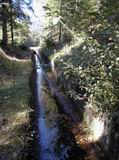 |
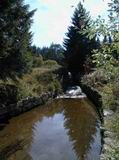 |
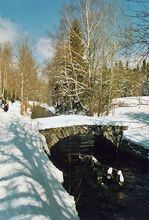 |
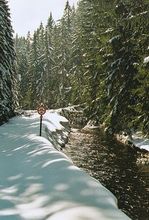 |
The circular green marked path leads from Srní along a part of the canal. The blue marked path, leading from Srní too, runs along the canal in its 2 km long part (about 2 km south of Srní) and the blue marked trail goes along the canal near Antýgl.